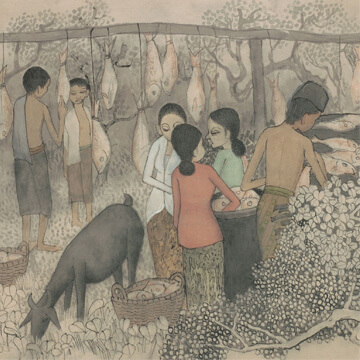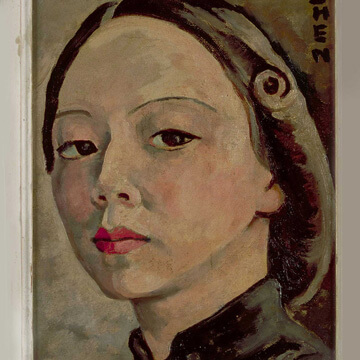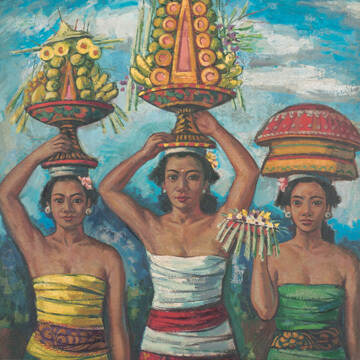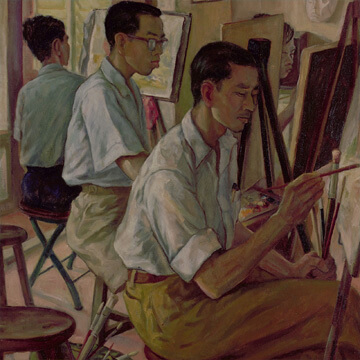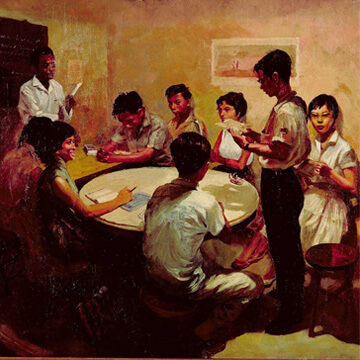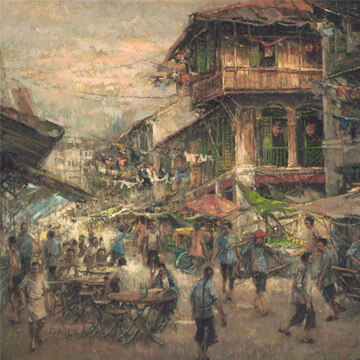Cheong Soo Pieng – “Drying Salted Fish”
Cheong Soo Pieng works are largely influenced by cultural traditions. He took interest in recreating the scenes he saw and experienced in the 1970s. Here in “Drying Salted Fish”, he is engaging the viewer’s senses to be able to relate to the scene he was part of. Have a sniff and smell the salty tang in the air and listen to the womenfolk as they speak amongst themselves as if you were standing at the bustling market. This iconic painting can also be found on the Singapore fifty-dollar note.

